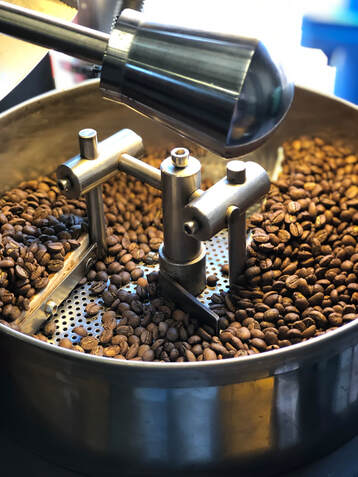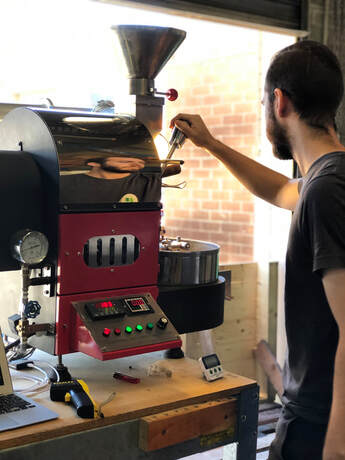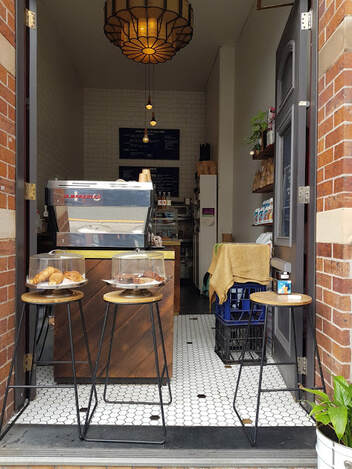|
Hello Everyone! A happy Easter from all of us here at G&T. We hope that you're all doing well in these wild times. A huge thank you to all, your amazing support means that we're still here roasting and shipping for all of your home coffee needs. This month we launched a really exciting new coffee. It comes from the Kochere Woreda (or Kochere district, like a council area) in Southern Ethiopia, an area that is well respected for great quality coffee. This coffee was naturally processed, but also underwent an extra step in processing called Carbonic Maceration, which comes from the wine industry. Let me explain what all this means. Coffees in Ethiopia are generally processed in one of two traditional methods. Both methods have their merits, and most people have preference for one or the other. The methods are called 'Washed' and 'Natural', here's the difference: - Washed - the coffee cherries are picked and then the cherry is pulped off the seeds (beans) using a machine. The seeds are then fermented in water for somewhere between 12 and 48 hours. This fermentation breaks down the mucilage layer around the seeds and imparts many of the aromas we later experience. After fermentation, the seeds are washed and laid out to dry on raised beds. Once dry, the seeds are milled and hand sorted before being packaged and sent to us to roast. Washed coffees tend to exhibit very clean characteristics and bright acidity. We often describe washed coffees from Kochere as tasting tea-like, floral and sweet like stone fruit. - Natural (how this coffee was processed) - the coffee cherries are picked, cleaned and then laid out to dry whole. Before the seeds begin to dry, they ferment inside the cherry, once again imparting aromas. Once the coffee is dry, it is again milled and hand sorted before being packaged and shipped. This different fermentation environment (from the washed process) inside the cherry yields vastly different characteristics in the cup. We tend to describe naturally processed coffees from Kochere as have higher body with notes of chocolate and ripe berries. They will often be tannic like a heavy red wine. Carbonic Maceration is another step that can be added before either processing method, and as mentioned, it comes from the wine industry. Grapes, or in our case coffee cherries, are placed in a stainless steel container. The container is filled with Carbon Dioxide gas to remove all the oxygen and then sealed. The container is kept in a temperature controlled environment and the fruit is allowed to ferment. We've found that this anaerobic style of fermentation amplifies flavours and texture in coffee. In this particular coffee the result is flavours of rose and purple lollies. The acidity is wildly vibrant and the body is rich and tannic. This coffee is truly something special. A new coffee roaster! This month we picked up a new coffee roaster. It has a 1 kilogram capacity and allows us to roast sample lots, do more roasting experiments, roast coffees for competition and roast small amounts of very fancy coffees (like the Ethiopia Carbonic Maceration lot). Expect to see more fancy coffees coming to the webshop soon. It has also been invaluable with the recent increase in retail orders, helping us get orders shipped out to all of you more frequently. Our cafe is still running, things just look a little different. Our cafe on King street in Newtown is still up and running for takeaways.
We have moved the coffee machine up to the front door which feels like how we should have set the cafe up in the first place. We've also increased our hygiene protocols to help keep everyone healthy. Also a reminder that you can order your coffee beans to pickup at the cafe to save on shipping fees. Stay healthy everyone! Until next month. Keith & Team G&T
1 Comment
1/2/2022 06:44:29 pm
Excellent article! Your post is essential today. Thanks for sharing, by the way.
Reply
Leave a Reply. |
Archives
February 2021
Categories |
Copyright © 2021 Grace & Taylor Coffee Company.




 RSS Feed
RSS Feed